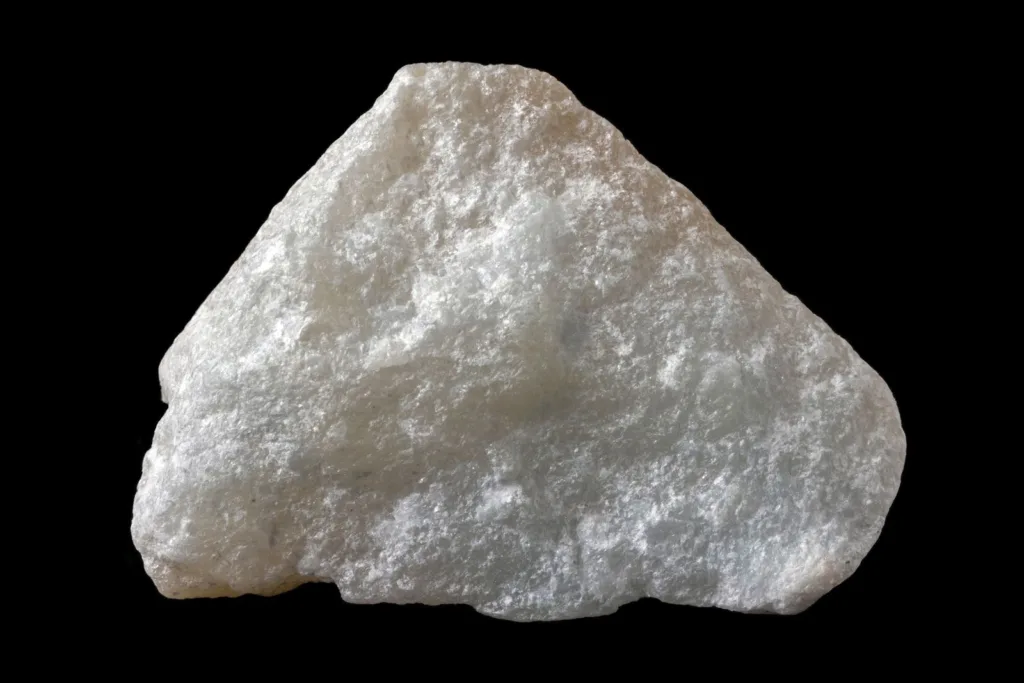When it comes to minerals, one of the most interesting factors to consider is their hardness. While some minerals are incredibly tough and can withstand a lot of wear and tear, others are incredibly soft and can be easily scratched or damaged.
At the very bottom of the hardness scale is a mineral known as talc. Talc is so soft that it can be scratched by just about anything, making it the go-to example when discussing mineral hardness.
Talc is a silicate mineral that is made up of magnesium, silica, and oxygen. It is often found in rocks that contain other minerals, such as serpentine, and can be mined for a variety of applications.
One of the most interesting things about talc is its texture. The mineral forms in thin, flat flakes that are alost mica-like in their appearance. These flakes can be easily cut or crushed, making talc a popular ingredient in a variety of products, from baby powder to ceramics.
Despite its softness, talc has a number of interesting properties that make it useful in a variety of applications. For example, it has a low coefficient of friction, which means it can help reduce friction between surfaces. Additionally, talc is chemically inert, which means it does not react with other substances, making it a popular choice for use in things like food packaging.
While talc may not be the toughest mineral out there, it is certainly one of the most interesting. Its unique properties and soft texture make it a valuable resource in a number of fields, and its presence in rocks can provide valuable clues about the geological history of an area.
Is Calcite The Softest Mineral?
Calcite is not the softest mineral. In fact, it is harder than talc but softer than materials like quartz and diamond. The Mohs hardness scale, which measures the relative hardness of minerals, assigns calcite a hardness of 3. This means that it can be easily scratched by materials that are harder than it, such as topaz and corundum. However, it can also scratch materials that are softer than it, such as gypsum and talc. Therefore, calcite falls somewhere in the middle of the hardness scale and is not the softest mineral.

What Is The Softest Mineral Gem?
The mineral gem with the softest hardness is talc. Talc is a silicate mineral and contains magnesium, silica, oxygen, and a small amount of water. It has a hardness of one (1) on the Mohs Hardness Scale, wich is the lowest score on the scale. Talc has a slippery and soapy feel due to its unique structure, which makes it an essential ingredient in many cosmetic and personal care products. Its softness also makes it useful in industrial applications such as paper-making and ceramics. talc is the softest mineral gem with a hardness score of one on the Mohs Hardness Scale.
What Is The Softest Ore?
The softest ore, as determined by the Mohs hardness scale, is talc. Talc is a mineral that is known for its softness and is rated at a hardness of 1 on the Mohs scale. Talc is a type of silicate mineral that is commonly found in metamorphic rocks. It has a greasy feel and is often used in a variety of applications, including cosmetics, ceramics, and paper making. Talc can be easily cut and crushed due to its low hardness and is frequently used as a filler in many industries. talc is the softest ore accordng to the Mohs hardness scale, which rates minerals on a scale of 1 to 10 based on their scratch resistance.
Conclusion
The softest mineral on the Mohs hardness scale is undoubtedly talc. With a hardness rating of just one, talc can be easily scratched by all other minerals. Talc is a silicate mineral that contains magnesium, water, silica, and oxygen. It coms in the form of mica-like flakes and is commonly found in rocks that are mined for a variety of applications. Despite its softness, talc can still be useful in industrial and cosmetic applications where a soft, smooth texture is desired. while talc may not be the most durable mineral, its unique properties make it an important part of our daily lives.
